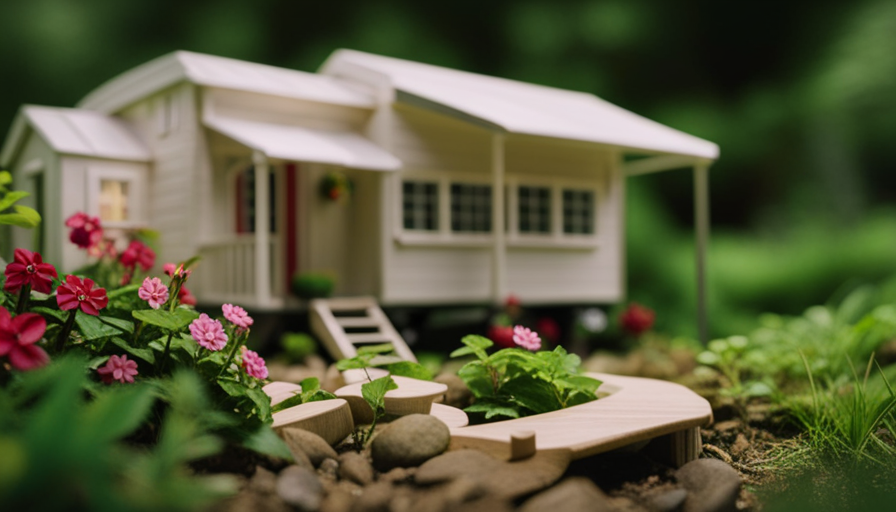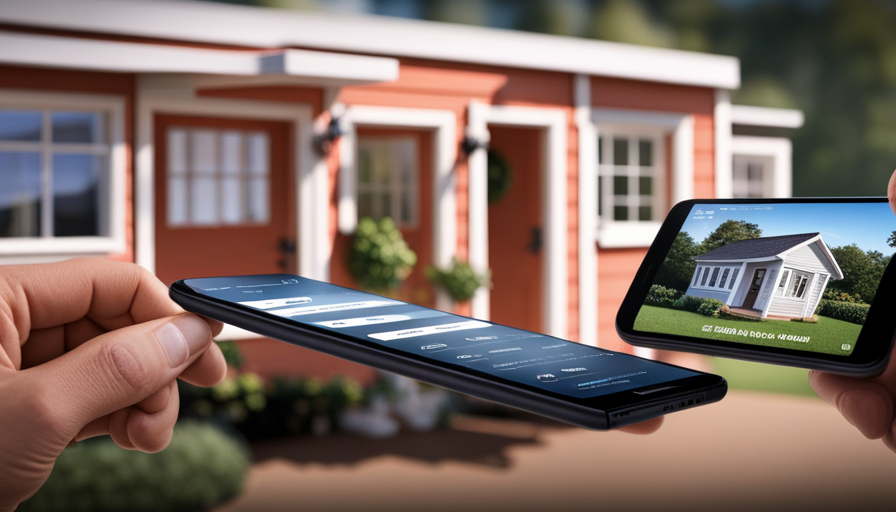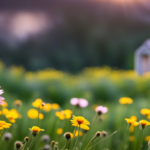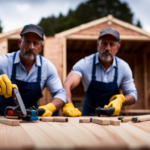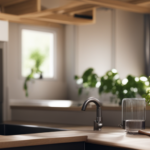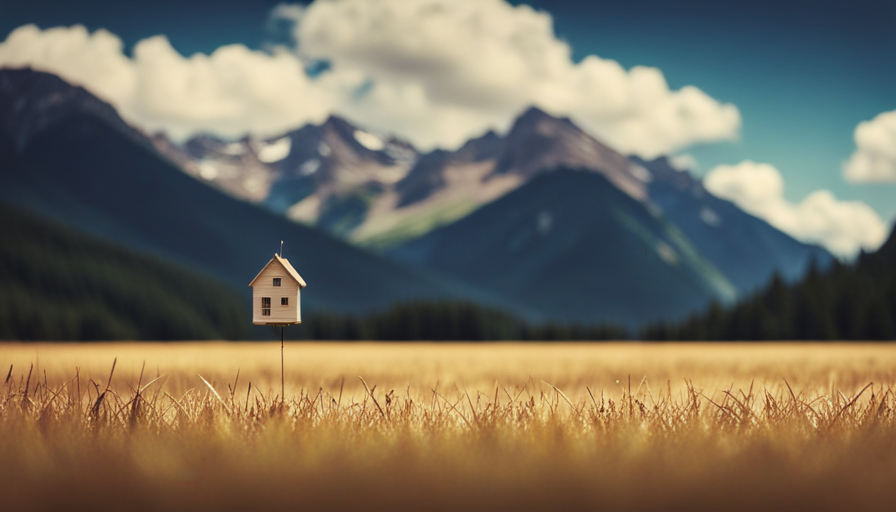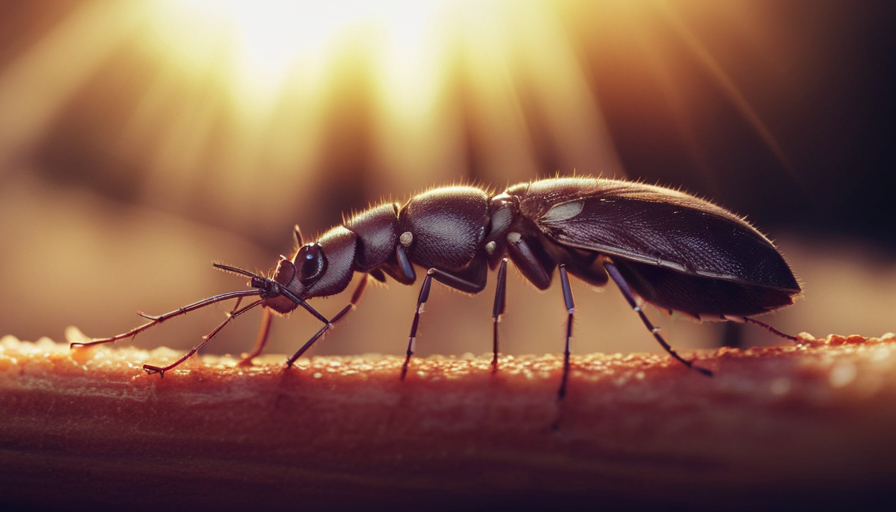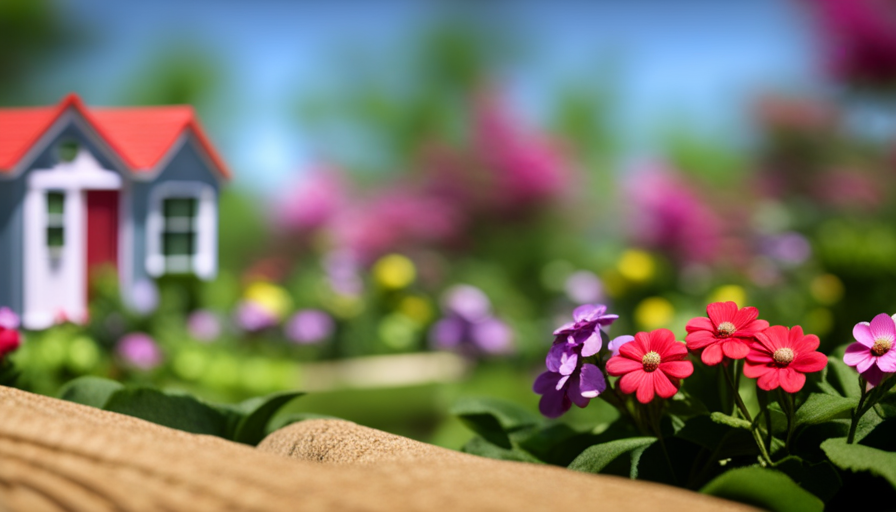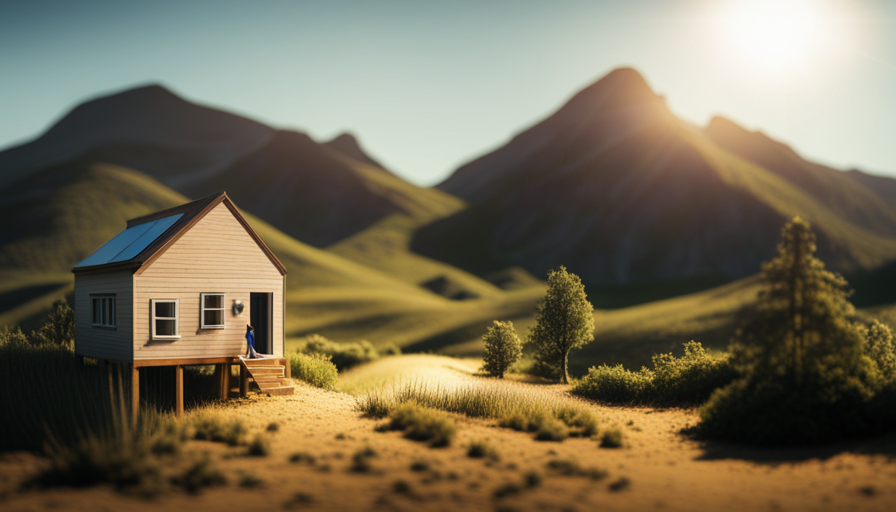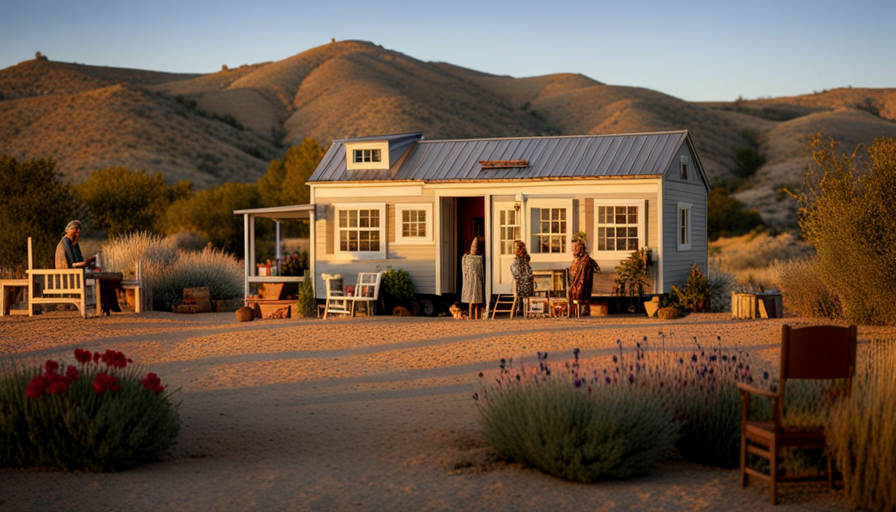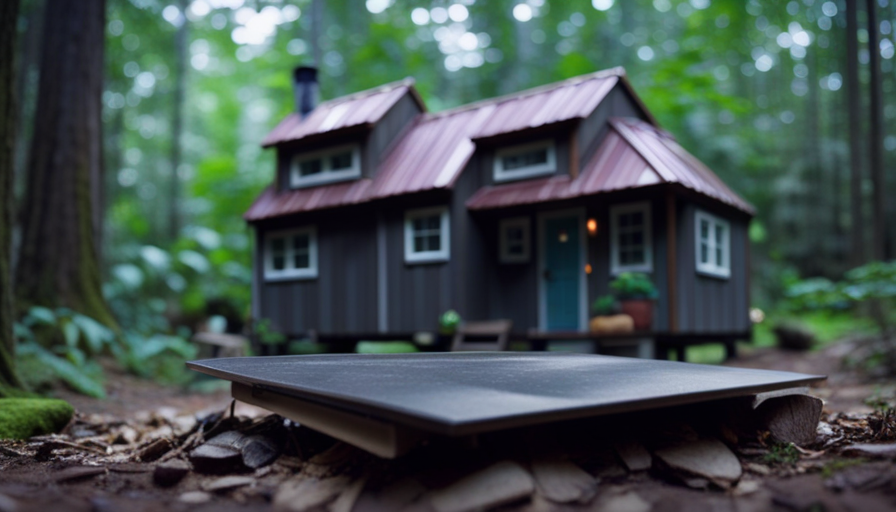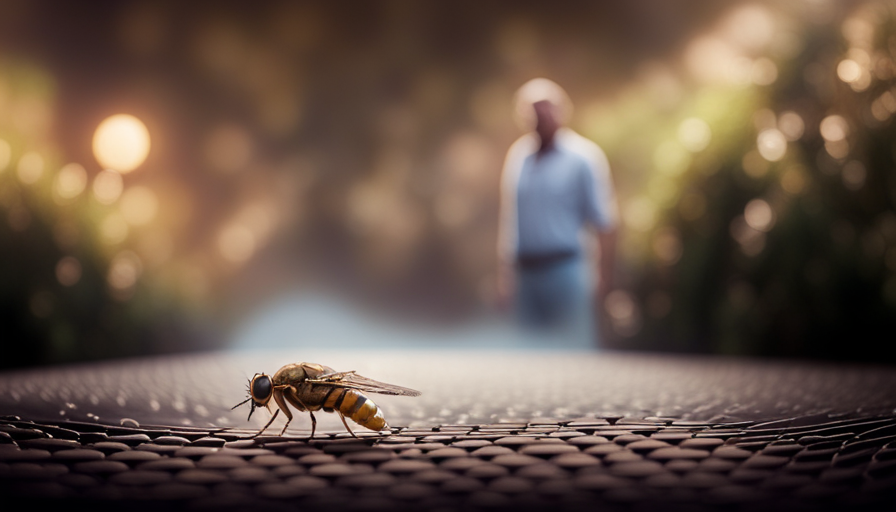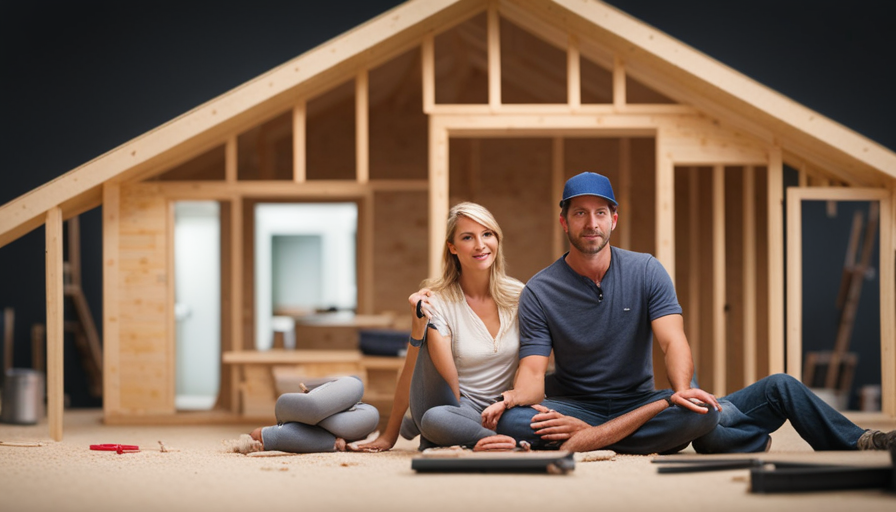Building a tiny house is an exciting venture that allows individuals to embrace a minimalist lifestyle and reduce their carbon footprint. However, embarking on this journey requires careful consideration of the financial aspects involved.
In this article, I will explore the cost of building a tiny house, providing you with a detailed breakdown of the expenses you can expect to incur. By delving into aspects such as determining your budget, researching local building codes, and choosing the right location, we will navigate the complexities of this endeavor together.
Additionally, I will guide you through the planning process, helping you design the perfect layout for your tiny abode. Furthermore, we will calculate material costs and budget for additional expenses, ensuring you have a comprehensive understanding of the financial commitment required.
Exploring financing options and tracking your expenses will enable you to make informed decisions throughout the construction process. Join me as we delve into the world of tiny house construction, understanding not only the upfront costs but also the long-term maintenance expenses. Together, we will empower you to make educated choices and embark on this rewarding journey with confidence.
Key Takeaways
- Consider the financial aspects and expenses involved in building a tiny house, including budgeting, researching local building codes, and choosing the right location.
- Use cost-saving strategies such as using reclaimed materials and exploring DIY options to save on material costs and labor expenses.
- Take into account ongoing maintenance and future expenses like property taxes and insurance, and incorporate sustainable options to minimize long-term maintenance costs.
- Evaluate financing options such as personal savings, RV loans, and personal loans, and consider purchasing materials in bulk to save costs.
Determine Your Budget
To determine your budget for building a tiny house, you’ll need to carefully assess your financial situation and consider factors such as your income, expenses, and long-term financial goals. Start by calculating your monthly income and subtracting all necessary expenses, including bills, groceries, and savings. This will give you a clear idea of how much money you have available for the project.
Next, consider cost-saving strategies that can help you maximize your budget. For example, you could opt for reclaimed or recycled materials instead of brand new ones, which can significantly reduce costs. Additionally, you can explore DIY options for certain aspects of the construction, such as painting or installing fixtures, to save on labor expenses.
It’s also important to take into account factors that may affect your budget allocation. These can include the size and complexity of the tiny house design, as well as any customizations or special features you desire. Additionally, don’t forget to factor in ongoing maintenance and future expenses, such as property taxes and insurance.
Once you have determined your budget, it’s time to move on to the next step: researching local building codes and regulations. This will ensure that you are aware of any restrictions or requirements that may impact your project.
Research Local Building Codes and Regulations
First things first, you’ll need to research the local building codes and regulations before you dive into your tiny house project. This step is crucial as it ensures that you comply with all the legal requirements and avoid any potential issues down the line.
Researching permits and understanding zoning regulations will help you determine what you can and cannot do when it comes to building your tiny house.
To make this process easier, here are three key points to consider:
-
Check with your local government: Contact your city or county building department to inquire about the specific permits you need for constructing a tiny house. They can provide you with the necessary information and guide you through the application process.
-
Understand zoning restrictions: Different areas have different zoning regulations that dictate where and how you can build your tiny house. Make sure to familiarize yourself with these rules to ensure that your tiny house project is in compliance.
-
Seek professional advice if needed: If you find the building codes and regulations overwhelming or confusing, consider consulting with an architect or a professional who specializes in tiny house construction. They can provide valuable insights and help you navigate through the process.
Once you have a clear understanding of the local building codes and regulations, you can move on to the next step of choosing the right location for your tiny house project.
Choose the Right Location
Consider envisioning the serene landscape where your dream tiny home will nestle, allowing you to bask in the natural beauty and tranquility of your chosen location.
When it comes to building a tiny house, finding affordable land is crucial. Look for areas where land prices are reasonable and where there are opportunities for sustainable living. Consider locations that have access to amenities such as water, electricity, and waste disposal systems. Research areas that have a low cost of living and are known for their eco-friendly practices, such as using renewable energy sources.
Choosing a sustainable location is also important. Look for areas that have a mild climate, which can help reduce energy consumption and make your tiny house more comfortable to live in. Consider areas with good public transportation options, as this can reduce your reliance on a car and lower your environmental impact. Additionally, look for locations that have a strong sense of community and are supportive of tiny house living.
In the subsequent section about planning your design and layout, you can start thinking about the specific details of your tiny house, such as the number of rooms, the overall layout, and any specific features you want to include.
Plan Your Design and Layout
Imagine creating the perfect layout and design for your dream tiny home, where every inch is thoughtfully planned and tailored to your needs and preferences. Design aesthetics play a crucial role in making your tiny house feel like a cozy and inviting home. Consider the style and theme you want to achieve, whether it’s a rustic cabin, a modern minimalistic design, or a beach-inspired retreat.
Incorporate elements that reflect your personality and create a space that you’ll love to live in. In addition to aesthetics, a functional layout is essential in maximizing the limited space of a tiny house. Carefully consider how each area will be utilized and ensure efficient use of space. Optimize storage by incorporating built-in cabinets, hidden compartments, and multi-functional furniture. Think about the flow of the house and how you’ll move through each area seamlessly. Utilize natural light and open floor plans to create an illusion of a larger space.
With the design and layout planned, you can now move on to calculating material costs. This is an important step in determining how much your dream tiny house will cost to build.
Calculate Material Costs
Now that you have your perfect design and layout in mind, it’s time to figure out the materials you’ll need to bring your dream tiny home to life.
To accurately estimate the cost of building a tiny house, it’s crucial to have a detailed breakdown of the materials required for each component. Begin by creating a comprehensive list of all the materials needed, including lumber, insulation, roofing, windows, doors, flooring, plumbing fixtures, electrical wiring, and any additional accessories or appliances.
Once you have your list, research the current market prices for each item. Take note of any variations in prices based on quality or brand. This will help you determine the most cost-effective options without compromising on quality. Consider reaching out to local suppliers or checking online retailers to compare prices and find the best deals.
To calculate the material costs, multiply the quantity of each item needed by its respective price. Add up all these individual costs to get a total estimate for the materials required for your tiny house. Keep in mind that prices can fluctuate over time, so it’s essential to regularly update your cost breakdown as you progress with your project.
Now that you have a clear cost estimation for the materials, it’s time to consider labor costs and how they fit into your budget.
Consider Labor Costs
Labor is the skilled hands that weave the threads of your vision together, breathing life into your dream home. When estimating labor costs for building a tiny house, it’s essential to consider various factors that can affect the overall expenses. Here are some key elements to keep in mind:
-
Complexity of the design: Intricate designs with unique features will require more labor time and expertise, ultimately increasing the cost.
-
Experience and skill level of the laborers: Experienced professionals may charge higher rates, but their expertise can ensure a higher quality build.
-
Size and scale of the project: Larger tiny houses will naturally require more labor hours to complete, impacting the overall cost.
-
Location: The cost of labor can vary depending on the region. Urban areas often have higher labor rates compared to rural locations.
Considering these labor cost factors is crucial in accurately estimating the total expenses for building your tiny house. Once you’ve accounted for labor costs, you can move on to budgeting for additional expenses without compromising the quality of your dream home.
Budget for Additional Expenses
Consider other financial aspects when planning your dream home, such as budgeting for additional expenses. Renovating costs and hidden expenses can quickly add up, so it’s essential to account for them in your overall budget.
While the initial cost of building a tiny house may be lower than that of a traditional home, it’s important to keep in mind any potential extra costs that may arise during the construction process.
One of the hidden expenses that you should consider is the cost of permits and inspections. Depending on your location, you may need to obtain permits for zoning, building, and electrical work. These permits can vary in price and may require additional inspections, which can add to the overall cost of your project.
Another potential additional expense is the cost of utilities. Tiny houses generally have smaller electrical, plumbing, and heating systems compared to traditional homes. However, you should still budget for these expenses, as they can vary depending on your specific needs and the climate in your area.
Lastly, don’t forget to factor in the cost of furniture and appliances. While tiny houses are often built with space-saving features, you’ll still need to furnish your home with essentials like a bed, kitchen appliances, and storage solutions.
Considering these budgeting aspects, it’s important to explore financing options that suit your needs. Transitioning into the next section, by exploring financing options, you can ensure that you have the necessary funds to cover not only the initial construction costs but also any additional expenses that may arise during the process.
Explore Financing Options
Let’s dive into the various financing options available to ensure you have the necessary funds to cover not only the initial construction expenses but also any additional costs that may arise during the process. When it comes to tiny house financing, there are several affordable housing options to consider:
-
Personal Savings: If you’ve been diligently saving money, using your personal savings can be a great option. It allows you to avoid interest rates and the hassle of dealing with loan applications.
-
RV Loans: Some tiny houses are built on wheels, making them eligible for RV loans. These loans often have lower interest rates and longer repayment terms compared to traditional mortgages.
-
Personal Loans: Another financing option is to take out a personal loan. These loans can be used for various purposes, including building a tiny house. However, keep in mind that interest rates may be higher than other options.
Exploring these financing options will help you find the best fit for your situation. Once you’ve secured the necessary funds, it’s important to track your expenses meticulously to ensure you stay within your budget. This will allow you to have a clear understanding of where your money is going and make any necessary adjustments along the way.
Track Your Expenses
Monitoring and keeping a close eye on your spending is essential when it comes to managing the financial aspects of your tiny home project. To ensure that you stay within your budget, it’s crucial to track your expenses throughout the entire construction process.
There are various tracking methods you can utilize, such as creating a spreadsheet or using budgeting apps. These tools allow you to record every expense, from materials and labor costs to permits and inspections. By diligently tracking your expenses, you can identify any areas where you might be overspending and make adjustments accordingly.
In addition to tracking methods, implementing cost-saving strategies can also help you stay on budget. Consider purchasing materials in bulk or sourcing them from salvage yards to save money. Opt for energy-efficient appliances and use sustainable building practices to reduce long-term operating costs. Furthermore, repurposing or upcycling materials can add a unique touch to your tiny home while minimizing expenses.
By tracking your expenses and implementing cost-saving strategies, you can effectively manage the financial aspects of your tiny home project. This will ensure that you stay within your budget and avoid any unexpected financial burdens. As you evaluate long-term maintenance costs, it’s important to consider these factors in order to make informed decisions about the sustainability and affordability of your tiny home.
Evaluate Long-Term Maintenance Costs
To ensure the longevity and affordability of your small home, it’s crucial to evaluate the potential long-term maintenance expenses you may encounter. Here are three important factors to consider when evaluating long-term maintenance costs for your tiny house:
-
Evaluate sustainability options: One of the key aspects of long-term maintenance is ensuring that your tiny house is sustainable. This includes using eco-friendly materials and implementing energy-efficient systems. By opting for sustainable options such as solar panels, rainwater harvesting systems, and composting toilets, you can significantly reduce your long-term maintenance costs. These options not only decrease your reliance on external resources but also lower the need for repairs and replacements.
-
Assess energy efficiency: Energy costs can be a major expense in the long run. Therefore, it’s essential to assess the energy efficiency of your tiny house. Insulation, energy-efficient windows, and efficient heating and cooling systems can help minimize your energy consumption and reduce your utility bills. Investing in these energy-saving measures upfront can result in significant savings over time.
-
Plan for regular maintenance: Like any other home, a tiny house also requires regular maintenance to ensure it remains in good condition. This includes tasks such as roof inspections, gutter cleaning, and general upkeep. By creating a maintenance schedule and budgeting for these routine tasks, you can prevent major issues from arising and save money on costly repairs in the future.
By evaluating sustainability options, assessing energy efficiency, and planning for regular maintenance, you can effectively manage the long-term maintenance costs of your tiny house while also enjoying the benefits of a sustainable and energy-efficient home.
Frequently Asked Questions
What are some common challenges faced when building a tiny house?
Challenges faced when building a tiny house include budget constraints, limited space for storage and living, zoning restrictions, and finding suitable land. It requires careful planning, resourcefulness, and creative problem-solving to overcome these obstacles.
Are there any specific permits or licenses required to build a tiny house?
Permit requirements and zoning regulations vary by location when building a tiny house. It’s important to research and adhere to local guidelines to ensure a smooth construction process. Remember, "Better safe than sorry."
Can I build a tiny house on a rented or leased piece of land?
Yes, it is possible to build a tiny house on rented or leased land. However, there may be legal requirements and permits you need to adhere to when constructing a tiny house on rented land.
Are there any restrictions on the size and height of a tiny house?
There are size restrictions and height restrictions when it comes to building a tiny house. These regulations vary depending on the location and local zoning laws. It is important to research and comply with these regulations before constructing a tiny house.
How long does it typically take to build a tiny house from start to finish?
On average, it takes around 4-6 months to build a tiny house from start to finish. This timeline can vary depending on factors such as size, complexity, and availability of materials. Cost breakdown includes expenses for materials, labor, and permits.
Conclusion
In conclusion, building a tiny house requires careful planning, research, and budgeting. It’s like embarking on a journey through uncharted territory, where every step must be calculated and precise.
Just like a skilled navigator, you must navigate through the maze of building codes and regulations, choose the perfect spot for your tiny abode, and meticulously calculate material costs.
Don’t forget to budget for unexpected expenses and explore financing options. And like a vigilant captain, keep track of your expenses and evaluate long-term maintenance costs.
With determination and attention to detail, you can successfully build your dream tiny house.
Hi, I’m Emma. I’m the Editor in Chief of Tiny House 43, a blog all about tiny houses. While tree houses are often associated with childhood, they can be the perfect adult retreat. They offer a cozy space to relax and unwind, surrounded by nature. And since they’re typically built on stilts or raised platforms, they offer stunning views that traditional homes simply can’t match. If you’re looking for a unique and romantic getaway, a tree house tiny house might just be the perfect option.
